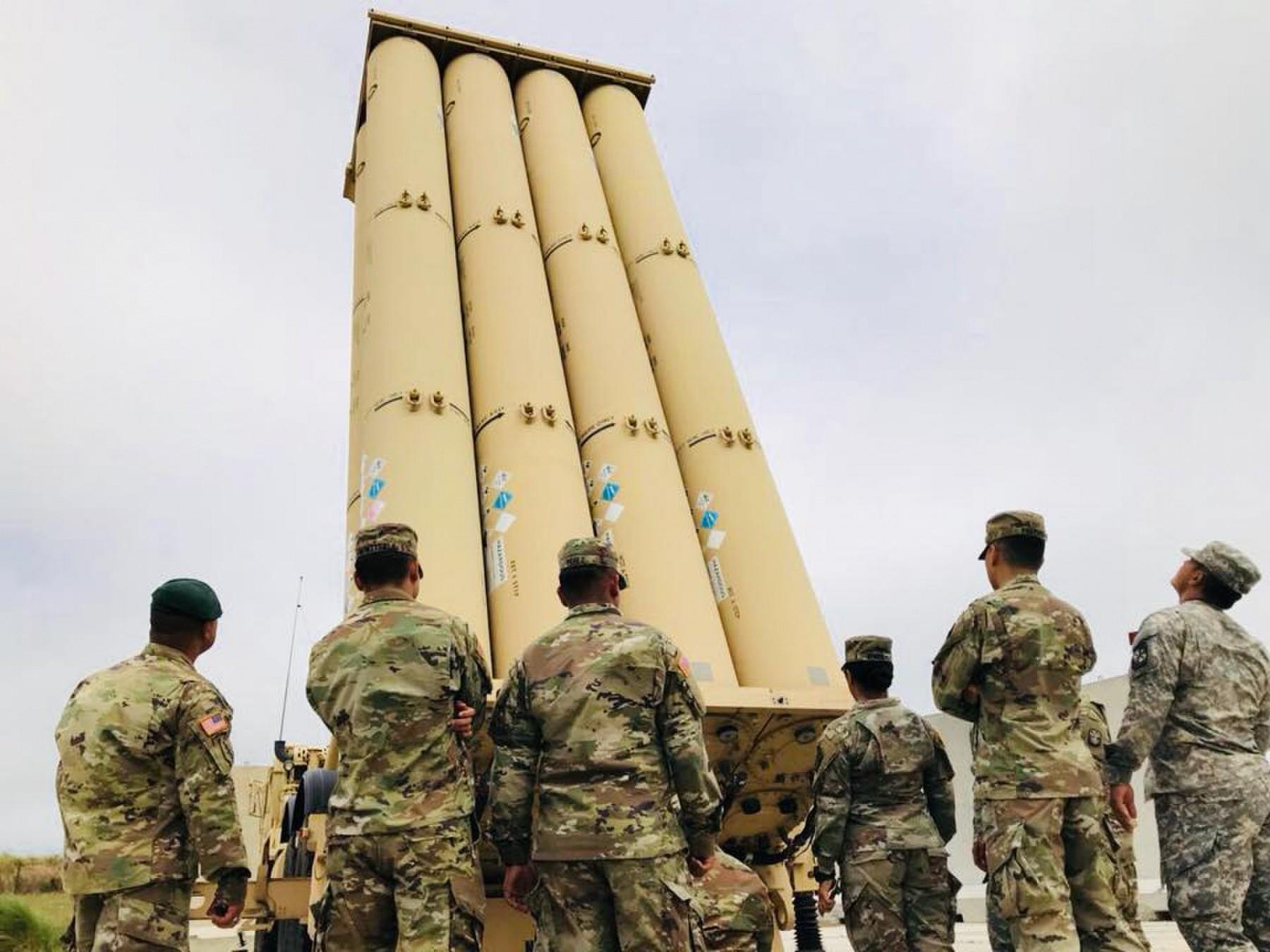
Guam is a 212-sq.-mi. patch of U.S. sovereign territory in the Western Pacific less than 1,600 nm from the coastline of China’s Fujian Province.
As a mountainous region due west of Taiwan, Fujian is the home of many of China’s long-range, conventional weapons, including the DF-26 intermediate-range ballistic missile (IRBM), which also is known as the “Guam killer.”
When China unveiled the DF-26 in 2015 during a military parade in Beijing, Guam was already prepared. Two months earlier, the U.S. Army had announced that a temporary deployment of one of seven Theater High Altitude Area Defense (THAAD) systems to Guam would become permanent.
At the time, it was not clear that a permanent THAAD presence on Guam would become useful in deterring the People’s Liberation Army Rocket Force. The first THAAD battery had arrived in Guam in 2013 to counter North Korea.
As the DF-26 moved into operational service in 2016, the THAAD battery appeared to be a defensive weapon system that was in the right place at the right time. A single THAAD battery consists of six launch vehicles. Each launch vehicle includes eight missile tubes. That means Guam is protected by 48 missiles that can be launched in a salvo to defend against a wave attack by DF-26 IRBMs.
But the threats have moved on. Guam also has faced the threat of a mass attack by air-launched cruise missiles. A People’s Liberation Army Air Force regiment of 18 H-6K bombers carries six CJ-10 land-attack cruise missiles each, creating the possibility of a wave attack by 108 cruise missiles. If positioned correctly, U.S. Air Force and Navy aircraft have the capability to detect, track and shoot down cruise missiles with air-to-air missiles and precision-guided rockets.
But another threat is growing in the Western Pacific. Flotillas of People’s Liberation Army Navy’s ships and submarines have made several circumnavigations of Guam and other islands in the Marianas. Each of those ships, including submarines, also has the ability to fire conventional cruise missiles at Guam from any direction.
In each case, the U.S. Army, Air Force and Navy have the ability to fire at the launch platforms and shoot down the incoming missiles.
However, a mass attack by land-based ballistic missiles, air-launched cruise missiles and surface- and submarine-launched cruise missiles poses a significant defensive challenge for the U.S. military.
The threat posed to Guam rises as its military significance grows. The island, which U.S. forces captured from the Spanish in 1898, served in World War I as a coal-refueling stop. In World War II, Guam was a key logistics base after it was recaptured from the Japanese in 1944. Twenty-five years later, the island served as a staging area for Boeing B-52H bomber strikes on North Vietnam.
China now looms as the U.S. military’s strategic competitor in the Pacific region. Adak, the next-closest populated city on sovereign U.S. soil, is 2,956 nm away from Guam. That makes Guam the most attractive real estate in the Western Pacific. But the U.S. military’s access to the island could be cut off in a war with China.
“It’s clear to me that Guam is not just a place that we believe that we can fight from, as we have for many decades,” said Adm. Philip Davidson, the commander of U.S. Indo-Pacific Command, during a March 9 hearing. “We are going to have to fight for it.”
The first line of defense—a THAAD battery—is no longer sufficient, Davidson says. THAAD missiles are not designed to protect against low-flying cruise missiles, which its TPY-2 radar also is not oriented to detect. The sensor also can look in only one direction, but now the threats to Guam could come from any line on the compass.
There is a potential answer to that problem, but the U.S. Defense Department chose to not ask Congress for the money for it last year. Instead, Indo-Pacom submitted a wish list of unfunded priorities that included the Aegis Ashore ballistic missile defense system. The proposal received an endorsement from the Senate Armed Services Committee, but a conference committee threw out the funding for Aegis Ashore on Guam, and directed Indo-Pacom to report back with a strategy to install an integrated air and missile defense capability on Guam by fiscal 2025.
The Biden administration still is developing the Pentagon’s budget request for fiscal 2022. But Davidson submitted a new “wish list” for Indo-Pacom for fiscal 2022 anyway, which again includes funding for the Aegis Ashore.
“We believe that the Aegis Ashore system, as it is being put to sea right now and has been constructed previously in Romania and Poland, delivers the kind of capabilities that would beat the threat that’s extant here by mid-decade, and will help us pace the threat into the future,” Davidson says.





